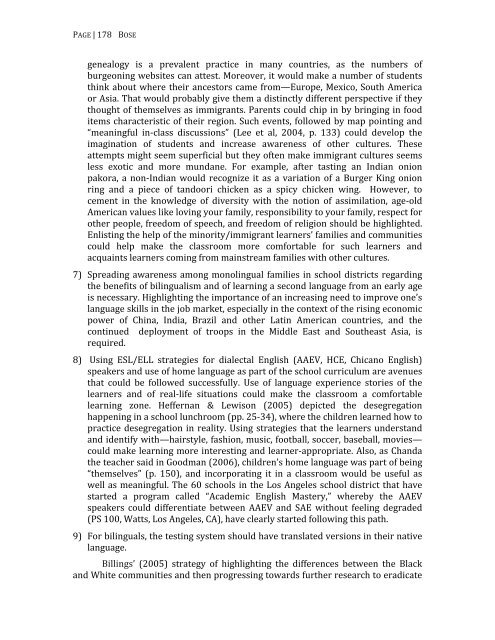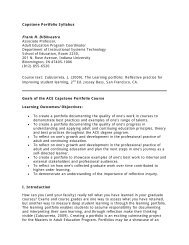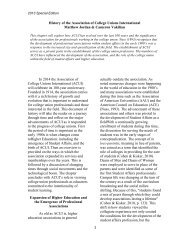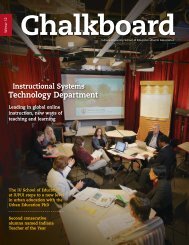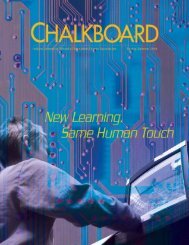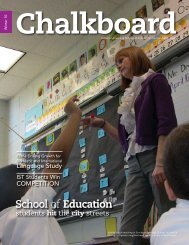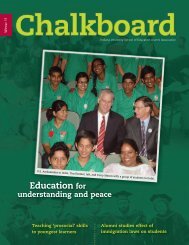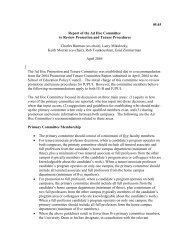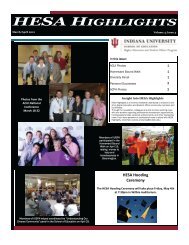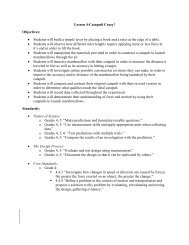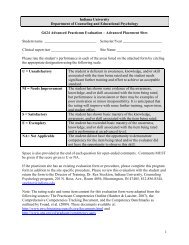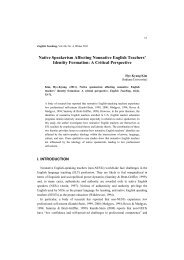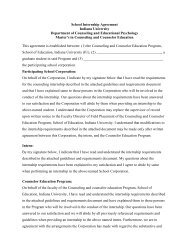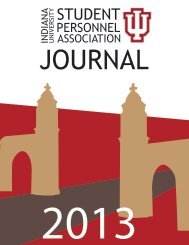Working Papers in Literacy, Culture, and Language Education
Working Papers in Literacy, Culture, and Language Education
Working Papers in Literacy, Culture, and Language Education
Create successful ePaper yourself
Turn your PDF publications into a flip-book with our unique Google optimized e-Paper software.
PAGE | 178BOSEgenealogy is a prevalent practice <strong>in</strong> many countries, as the numbers ofburgeon<strong>in</strong>g websites can attest. Moreover, it would make a number of studentsth<strong>in</strong>k about where their ancestors came from—Europe, Mexico, South Americaor Asia. That would probably give them a dist<strong>in</strong>ctly different perspective if theythought of themselves as immigrants. Parents could chip <strong>in</strong> by br<strong>in</strong>g<strong>in</strong>g <strong>in</strong> fooditems characteristic of their region. Such events, followed by map po<strong>in</strong>t<strong>in</strong>g <strong>and</strong>“mean<strong>in</strong>gful <strong>in</strong>‐class discussions” (Lee et al, 2004, p. 133) could develop theimag<strong>in</strong>ation of students <strong>and</strong> <strong>in</strong>crease awareness of other cultures. Theseattempts might seem superficial but they often make immigrant cultures seemsless exotic <strong>and</strong> more mundane. For example, after tast<strong>in</strong>g an Indian onionpakora, a non‐Indian would recognize it as a variation of a Burger K<strong>in</strong>g onionr<strong>in</strong>g <strong>and</strong> a piece of t<strong>and</strong>oori chicken as a spicy chicken w<strong>in</strong>g. However, tocement <strong>in</strong> the knowledge of diversity with the notion of assimilation, age‐oldAmerican values like lov<strong>in</strong>g your family, responsibility to your family, respect forother people, freedom of speech, <strong>and</strong> freedom of religion should be highlighted.Enlist<strong>in</strong>g the help of the m<strong>in</strong>ority/immigrant learners’ families <strong>and</strong> communitiescould help make the classroom more comfortable for such learners <strong>and</strong>acqua<strong>in</strong>ts learners com<strong>in</strong>g from ma<strong>in</strong>stream families with other cultures.7) Spread<strong>in</strong>g awareness among monol<strong>in</strong>gual families <strong>in</strong> school districts regard<strong>in</strong>gthe benefits of bil<strong>in</strong>gualism <strong>and</strong> of learn<strong>in</strong>g a second language from an early ageis necessary. Highlight<strong>in</strong>g the importance of an <strong>in</strong>creas<strong>in</strong>g need to improve one’slanguage skills <strong>in</strong> the job market, especially <strong>in</strong> the context of the ris<strong>in</strong>g economicpower of Ch<strong>in</strong>a, India, Brazil <strong>and</strong> other Lat<strong>in</strong> American countries, <strong>and</strong> thecont<strong>in</strong>ued deployment of troops <strong>in</strong> the Middle East <strong>and</strong> Southeast Asia, isrequired.8) Us<strong>in</strong>g ESL/ELL strategies for dialectal English (AAEV, HCE, Chicano English)speakers <strong>and</strong> use of home language as part of the school curriculum are avenuesthat could be followed successfully. Use of language experience stories of thelearners <strong>and</strong> of real‐life situations could make the classroom a comfortablelearn<strong>in</strong>g zone. Heffernan & Lewison (2005) depicted the desegregationhappen<strong>in</strong>g <strong>in</strong> a school lunchroom (pp. 25‐34), where the children learned how topractice desegregation <strong>in</strong> reality. Us<strong>in</strong>g strategies that the learners underst<strong>and</strong><strong>and</strong> identify with—hairstyle, fashion, music, football, soccer, baseball, movies—could make learn<strong>in</strong>g more <strong>in</strong>terest<strong>in</strong>g <strong>and</strong> learner‐appropriate. Also, as Ch<strong>and</strong>athe teacher said <strong>in</strong> Goodman (2006), children’s home language was part of be<strong>in</strong>g“themselves” (p. 150), <strong>and</strong> <strong>in</strong>corporat<strong>in</strong>g it <strong>in</strong> a classroom would be useful aswell as mean<strong>in</strong>gful. The 60 schools <strong>in</strong> the Los Angeles school district that havestarted a program called “Academic English Mastery,” whereby the AAEVspeakers could differentiate between AAEV <strong>and</strong> SAE without feel<strong>in</strong>g degraded(PS 100, Watts, Los Angeles, CA), have clearly started follow<strong>in</strong>g this path.9) For bil<strong>in</strong>guals, the test<strong>in</strong>g system should have translated versions <strong>in</strong> their nativelanguage.Bill<strong>in</strong>gs’ (2005) strategy of highlight<strong>in</strong>g the differences between the Black<strong>and</strong> White communities <strong>and</strong> then progress<strong>in</strong>g towards further research to eradicate


